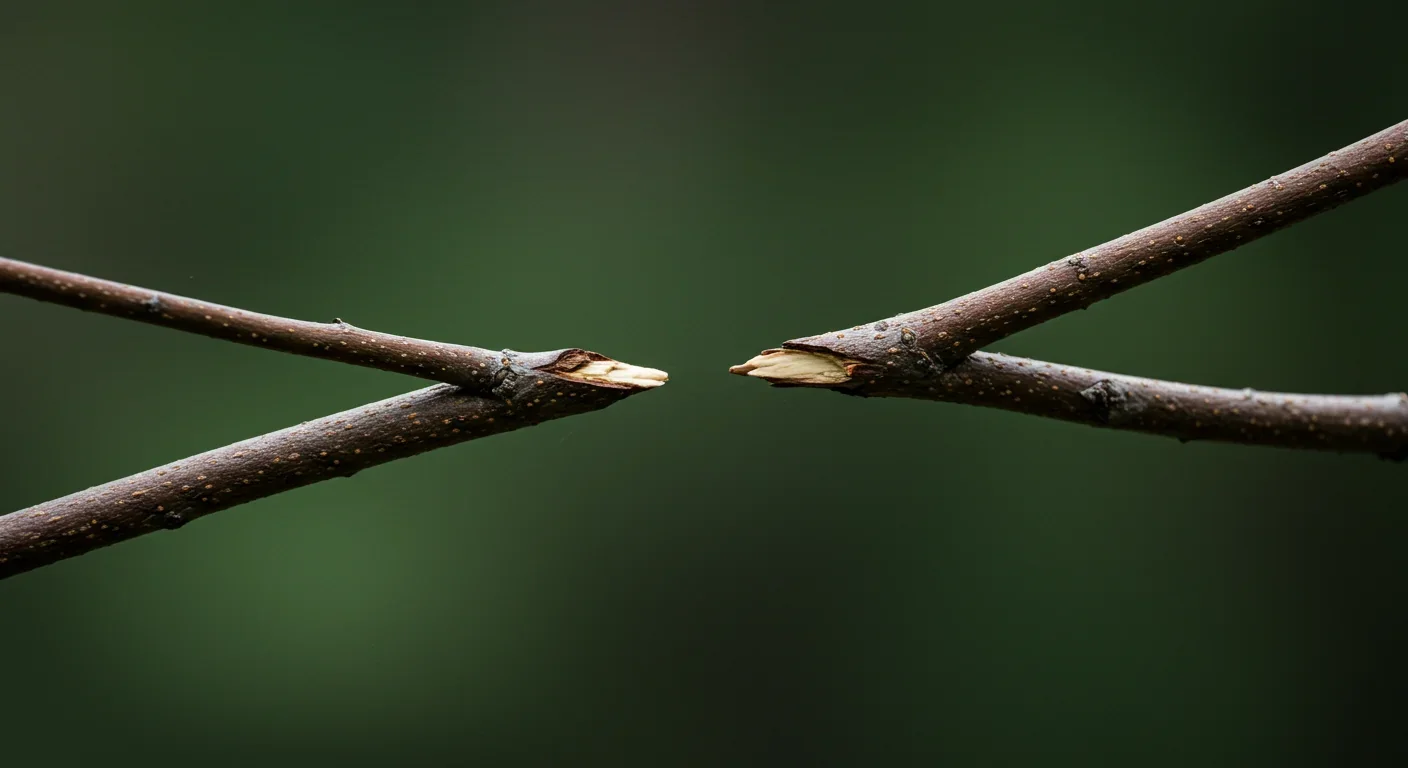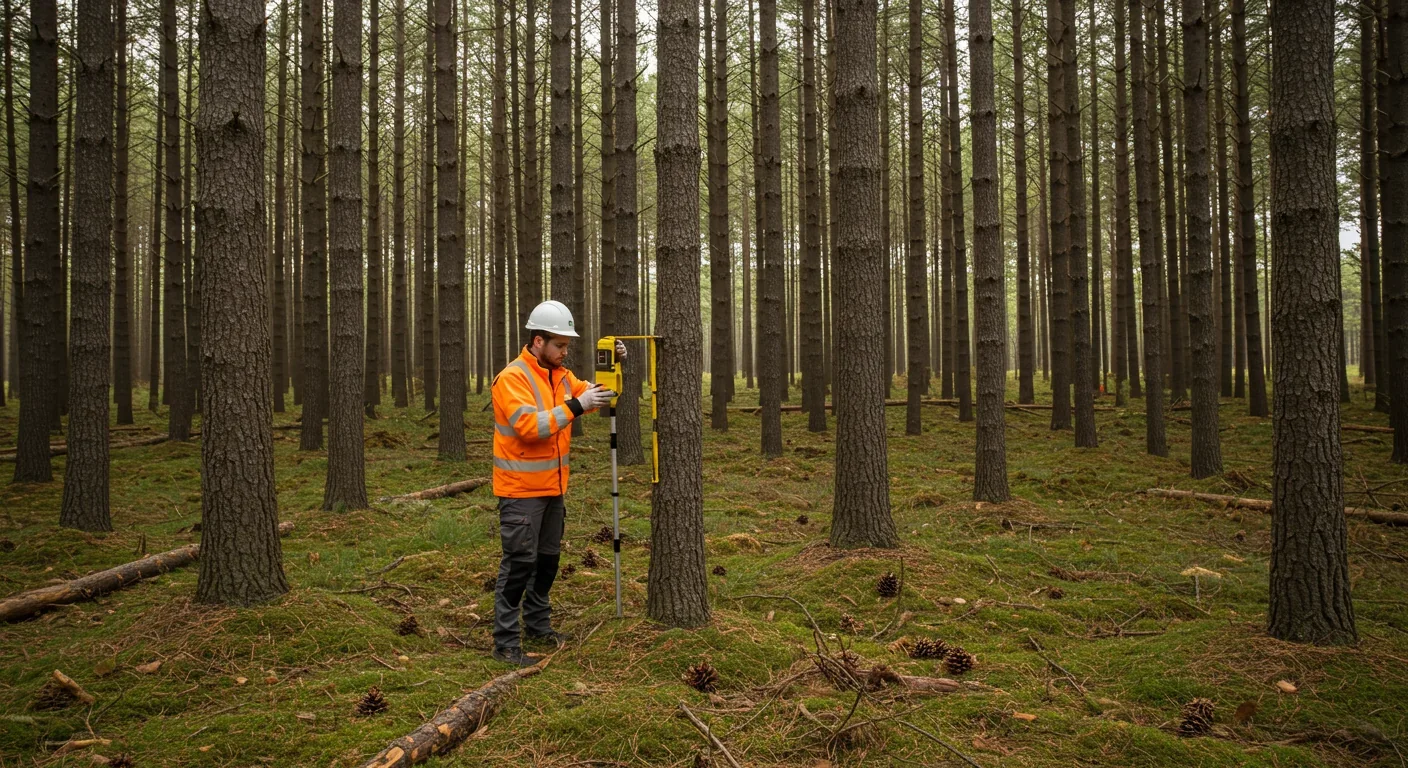Forest Biological Clocks: Ecosystems That Keep Time

TL;DR: Crown shyness is a natural phenomenon where tree canopies maintain visible gaps instead of touching, likely caused by wind-induced branch collisions and light-sensing mechanisms that help trees optimize resource allocation and reduce disease transmission.

Look up at a dense forest canopy on a sunny day. Instead of a solid green ceiling, you might notice something peculiar: delicate channels of light forming intricate puzzle patterns where tree crowns refuse to touch. This natural phenomenon, called crown shyness, challenges our assumptions about how plants compete for resources. Rather than aggressively crowding each other for every ray of sunlight, certain trees maintain respectful gaps between their branches, creating fracture-like patterns visible from the forest floor. Scientists have puzzled over this behavior for decades, and recent research suggests the answer involves wind-induced collisions, light-sensing capabilities that rival our own eyes, and perhaps even a form of arboreal self-preservation we're only beginning to understand.
Crown shyness manifests as visible channels between adjacent tree crowns, typically ranging from one to three meters wide depending on species, tree height, and environmental conditions. The gaps persist year after year, creating consistent patterns that foresters and ecologists can map from ground surveys or aerial photography. What makes this especially intriguing is its universality: oaks in temperate North America, sweetgum trees across the American South, Borneo camphor trees in Southeast Asian rainforests, and even pine plantations all exhibit the same behavior.
The term itself, as anthropomorphized as it sounds, captures something essential about the observation. "Trees will keep just a bit of sunlight between them and their neighbor," notes one forestry guide. It's tempting to imagine the trees exercising conscious restraint, though the reality involves complex interactions between physics, biology, and environmental conditions.
Crown shyness appears across both deciduous and coniferous species, though it shows up most dramatically in monoculture stands. Pine plantations and large groves of black mangrove demonstrate pronounced gaps, suggesting that species diversity might actually reduce the phenomenon rather than intensify it.
One of the most fascinating explanations for crown shyness centers on trees' ability to detect their neighbors before physical contact occurs. Research from Argentina demonstrated that trees can "detect the presence of neighbors before being shaded by them," using internal sensors called phytochromes that respond to light on the red-to-far-red spectrum. When neighboring foliage reflects far-red light toward a tree, it can sense that a competitor is approaching and actively inhibit lateral branch growth in that direction.
This isn't anthropomorphism; it's sophisticated biochemistry. Trees don't want to invest resources in branches that will soon be shaded and therefore unproductive. The far-red detection system allows them to make preemptive resource allocation decisions, directing growth toward more promising directions. It's an elegant solution to a resource competition problem, one that prevents wasted energy on doomed branches.
The phytochrome mechanism raises intriguing questions about plant intelligence and communication. If trees can sense and respond to neighbors through light signatures, what other information might they be exchanging? This discovery fits into a broader revolution in our understanding of plant cognition, where organisms once thought passive are revealed to be active participants in complex ecological negotiations.

While light sensing explains how trees might maintain gaps, it doesn't fully account for why the gaps form in the first place. Enter the mechanical abrasion hypothesis, perhaps the most widely accepted explanation for crown shyness. University of Florida botanist Francis "Jack" Putz conducted groundbreaking research on this in Costa Rica during the 1980s, work that's still frequently cited in current publications.
Putz discovered a positive correlation between branch flexibility and gap width. Trees with branches that sway more frequently in the wind maintained larger gaps between crowns. The mechanism is straightforward but consequential: when wind pushes branches together, the collision damages delicate growing tips. After repeated abrasion, trees essentially prune themselves at the contact points, creating and maintaining the characteristic gaps.
This theory elegantly explains why crown shyness appears more pronounced in forests where wind speeds are moderate and foliage density is high. Too little wind, and branches don't collide. Too much wind, and trees adopt entirely different growth strategies. The sweet spot produces those beautiful canopy puzzles.
The primary driver, according to current understanding, is thought to be mechanical abrasion where "wind-blown branches physically damage each other's delicate growing tips, creating a pruned border." What appears as polite spacing is actually the aftermath of countless tiny collisions, each one signaling the tree to retreat slightly.
Science rarely offers single, simple explanations for complex natural phenomena, and crown shyness is no exception. Beyond wind abrasion and light sensing, researchers have proposed additional mechanisms that might work in concert:
Resource competition theory suggests that maintaining gaps allows trees to avoid competing for the exact same light, water, and nutrients. By spacing out canopy coverage, neighboring trees reduce direct competition and potentially improve overall forest productivity.
Pest and pathogen barriers represent another compelling angle. By creating a physical discontinuity between canopies, crown shyness may act as a natural firebreak, slowing the spread of pests and pathogens from one tree to the next. This would provide a measurable survival advantage, reducing disease transmission compared to trees with interlocking crowns.
Chemical signaling remains speculative but intriguing. Some researchers hypothesize that trees might release or detect chemical signals that inhibit growth toward neighbors. While less evidence supports this mechanism compared to mechanical and optical explanations, it fits with emerging research on how plants communicate through volatile compounds.
The reality is probably that multiple mechanisms work together, varying in importance depending on species, environment, and local conditions. Wind abrasion might initiate gaps that trees then maintain through light sensing, while pathogen pressure provides evolutionary reinforcement for the behavior.
The gaps between tree crowns aren't just visually striking; they have measurable impacts on forest structure and function. Light penetration through crown shyness channels creates heterogeneous understory conditions, allowing different plant communities to establish compared to forests with closed canopies. This affects everything from seedling recruitment to wildlife habitat quality.
For foresters and land managers, crown shyness presents both challenges and opportunities. The phenomenon can reduce overall canopy coverage and potentially decrease forest productivity in terms of timber volume or carbon sequestration. However, the enhanced light penetration might benefit understory biodiversity and make forests more resilient to certain disturbances.
Interestingly, the observation that monoculture plantations exhibit pronounced crown shyness suggests that diversity enhancement could be a management strategy. Mixed-species stands might reduce unnecessary gaps and improve overall forest canopy coverage, though this remains an area needing more research.
The disease barrier function, if confirmed, could make crown shyness a desirable trait in managed forests, particularly those vulnerable to pest outbreaks. Rather than fighting the natural spacing pattern, foresters might work with it, using crown shyness as part of integrated pest management strategies.

Crown shyness patterns can be observed from ground level, where they create beautiful patterns against the sky, or from aerial views, where they form intricate networks across the canopy. Notable locations include the FRIM (Forest Research Institute Malaysia) in Kepong, where hikers regularly witness spectacular examples during canopy walks.
The phenomenon appears most dramatic when viewed from directly below, where the gaps create "visible channels or fracture patterns" that persist over many years. Photographers prize these images, which capture nature creating unintentional art through simple physical and biological principles.
Different species create different patterns. Some maintain narrow, consistent gaps, while others show wider, more irregular spacing. Environmental factors, tree age, and stand density all influence the final appearance, making each forest's crown shyness pattern unique.
Modern technology is opening new avenues for studying crown shyness. LiDAR (Light Detection and Ranging) allows researchers to create detailed three-dimensional maps of forest canopies, measuring gap widths with unprecedented precision. Drone-mounted cameras can monitor how gaps change over seasons and years, revealing dynamics invisible to ground-based observers.
Questions remain about how crown shyness might change as climate shifts. Will altered wind patterns or increased storm frequency modify gap formation? How will crown shyness interact with the stress responses of trees facing drought or heat extremes? These questions matter because understanding crown shyness helps us predict how forests will respond to environmental change.
The phenomenon also raises broader questions about plant behavior and decision-making. If trees can sense neighbors and adjust growth accordingly, what other sophisticated responses might we discover? Crown shyness reminds us that plants, though they can't move or speak, aren't passive. They're constantly sensing their environment, making resource allocation decisions, and responding to neighbors through mechanisms we're only beginning to decode.
Crown shyness embodies a principle that extends beyond forestry: sometimes maintaining space is more advantageous than aggressive competition. In human systems, we often assume that filling every available niche maximizes productivity, but trees demonstrate that strategic gaps can reduce disease transmission, minimize damage, and create conditions for long-term stability.
The multiple competing theories for crown shyness also reflect how science often works. Rather than a single eureka moment, understanding emerges gradually through accumulating evidence, competing hypotheses, and the recognition that complex phenomena rarely have simple explanations. Wind, light, chemistry, evolution, and chance all play roles in creating those beautiful canopy puzzles.
For those of us who walk through forests, crown shyness offers a reminder to look up. Above our heads, trees are negotiating boundaries, sensing neighbors, and maintaining respectful distances through mechanisms refined over millions of years. It's one of nature's quiet signals, trees maintaining respectful distance not out of intention but through a mix of wind, light detection, and self-preservation.
Next time you find yourself beneath a forest canopy, take a moment to search for those gaps. They're evidence that even in the fierce competition for survival, there's room for spacing, boundaries, and the kind of restraint that, if it were human, we'd call wisdom.

MOND proposes gravity changes at low accelerations, explaining galaxy rotation without dark matter. While it predicts thousands of galaxies correctly, it struggles with clusters and cosmology, keeping the dark matter debate alive.

Ultrafine pollution particles smaller than 100 nanometers can bypass the blood-brain barrier through the olfactory nerve and bloodstream, depositing in brain tissue where they trigger neuroinflammation linked to dementia and neurological disorders, yet remain completely unregulated by current air quality standards.

CAES stores excess renewable energy by compressing air in underground caverns, then releases it through turbines during peak demand. New advanced adiabatic systems achieve 70%+ efficiency, making this decades-old technology suddenly competitive for long-duration grid storage.

Our brains are hardwired to see patterns in randomness, causing the gambler's fallacy—the mistaken belief that past random events influence future probabilities. This cognitive bias costs people millions in casinos, investments, and daily decisions.

Forests operate as synchronized living systems with molecular clocks that coordinate metabolism from individual cells to entire ecosystems, creating rhythmic patterns that affect global carbon cycles and climate feedback loops.

Generation Z is the first cohort to come of age amid a polycrisis - interconnected global failures spanning climate, economy, democracy, and health. This cascading reality is fundamentally reshaping how young people think, plan their lives, and organize for change.

Zero-trust security eliminates implicit network trust by requiring continuous verification of every access request. Organizations are rapidly adopting this architecture to address cloud computing, remote work, and sophisticated threats that rendered perimeter defenses obsolete.